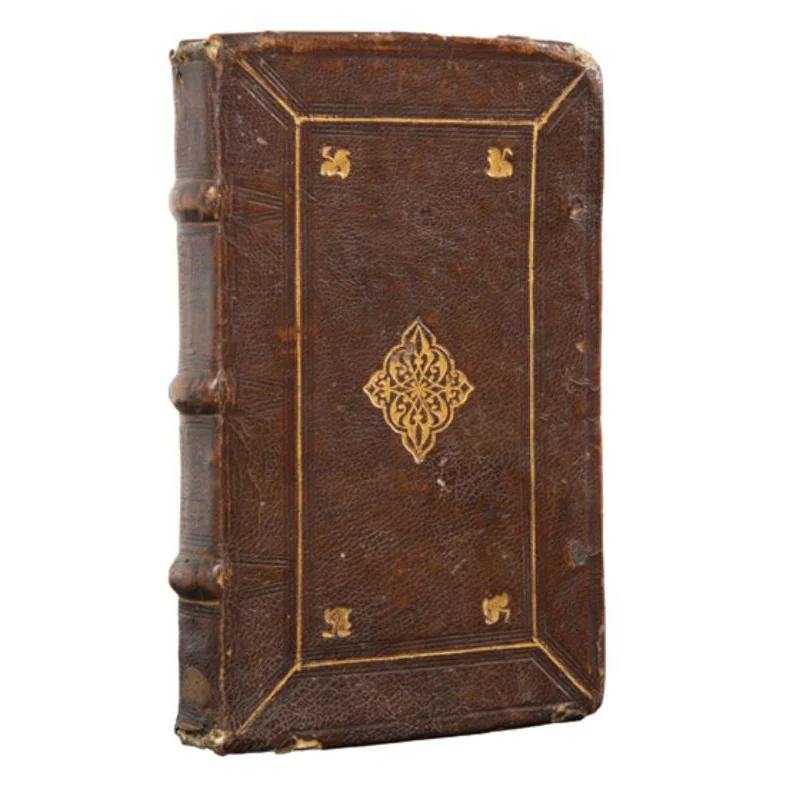Sallustius Crispus, Gaius (86-34/33 BC). De coniuratione Catilinae...Venice, Aldo Manuzio’s heirs and Andrea Torresano, January 1521.
Sallustius Crispus, Gaius (86-34/33 BC). De coniuratione Catilinae...Venice, Aldo Manuzio’s heirs and Andrea Torresano, January 1521.
Sallustius Crispus, Gaius (86-34/33 BC).
De coniuratione Catilinae. Eiusdem De bello Iugurthino. Orationes quaedam ex libris historiarum... Eiusdem oratio contra M. T. Ciceronem. M. T. Ciceronis oratio contra C. Crispum Sallustium. Eiusdem oratione quatuor contra Lucium Catilinam....
Venice, Aldo Manuzio’s heirs and Andrea Torresano, January 1521.
The Mendoza Binder for the Aldine Press
Sallustius Crispus, Gaius (86-34/33 BC).
De coniuratione Catilinae. Eiusdem De bello Iugurthino. Orationes quaedam ex libris historiarum... Eiusdem oratio contra M. T. Ciceronem. M. T. Ciceronis oratio contra C. Crispum Sallustium. Eiusdem oratione quatuor contra Lucium Catilinam.... Venice, Aldo Manuzio’s heirs and Andrea Torresano, January 1521.
8° (160x98 mm). Collation: a-t8. [8], 142, [2] leaves. Complete with fol. t7 blank. Italic and roman type. Woodcut Aldine devices on the title-page and verso of the last leaf, in two variants. Blank spaces for capitals, with printed guide letters. Fine contemporary dark brown Venetian morocco over pasteboards. Covers within a border of multiple blind fillets, one in gilt. At the centre lacework tool in gilt, one small gilt-tooled ivy-leaf at each corner. Holes for a pair of ties to the fore edge. Spine with three raised bands, underlined by blind fillets. Darkened edges. Trace of a small round paper label on the spine, with the inked number '303'. Corners and board edges slightly worn, minor loss to the extremities. A very good copy, title-page lightly soiled and spotted. Some foxing, tiny wormholes to the blank upper margin of a few leaves, without any loss. On the front pastedown the pencilled price notice '£ 5-50'.
Provenance: ownership inscription barely legible on the front pastedown, dated 1663 ('[?]aria Fabritius duodecim et semis 1663 Paris.'); Edward Herbert Viscount Clive, 2nd Earl of Powis (1785-1848; ex-libris on the front pastedown; his sale, Sotheby's, 22 Mar. 1923, lot 492); Bernard Quaritch (Catalogue of a most important Collection of Publications of the Aldine Press, 1494-1595, London 1929).
The rare second Aldine edition of Sallustius' works, first issued by Aldus Manutius in April 1509 and offered here in a handsome contemporary binding. The 1521 publication includes Aldus' original dedicatory epistle, followed by an address to readers by Aldus' brother-in-law Gian Francesco Torresano, who edited and improved the text. According to Renouard, this edition is superior to that of 1509, in that it is “beaucoup plus belle, imprimée avec un caractère neuf, et d'un meilleur texte”.
The volume's fine binding was executed in a style frequently seen in editions published by the Aldine printing house, and can confidently be attributed to the Mendoza Binder, the skilled craftsman so called owing to his association to one of the greatest book collectors of that age, Diego Hurtado de Mendoza, the Emperor's ambassador to Venice from 1540 to 1546. This binder was active in Venice between 1518/19-1555, and also worked for other collectors – among others, Johann Jakob Fugger – and Venetian booksellers, primarily for the press run by Andrea Torresano, and later by the Manuzio- Torresano partnership. “Quite apart from his work for Hurtado de Mendoza the binder produced regular trade work for the book-buying public. These have fairly standard decorative schemes. His typical trade binding is decorated with a rectangular frame of one gilt and multiple blind lines, rosettes and ivy-leaves at the corners and a smaller leaf between them, either in silver or in blind. The title and often the customer's initials are gilt on the upper cover. These are bindings made either for a bookseller's stock or a bookseller's customer. Binders in Venice were not allowed by the booksellers' guild to sell books directly to the public. Although no doubt major collectors [...] would have dealt directly with a binder, most customers must have arranged for binding through a bookshop” (A. Hobson, “Was There an Aldine Bindery?”, pp. 243-244).
Adams S-147; STC Italian 599; Renouard Alde, 93.16; Cataldi Palau 60; Ahmanson-Murphy 194; A. Hobson, “Was There an Aldine Bindery?”, D. S. Zeidberg (ed.), Aldus Manutius and Renaissance Culture. Essays in Memory of Franklin D. Murphy, Florence 1998, pp. 237-245; Philobiblon, One Thousand Years of Bibliophily, no. 70.

